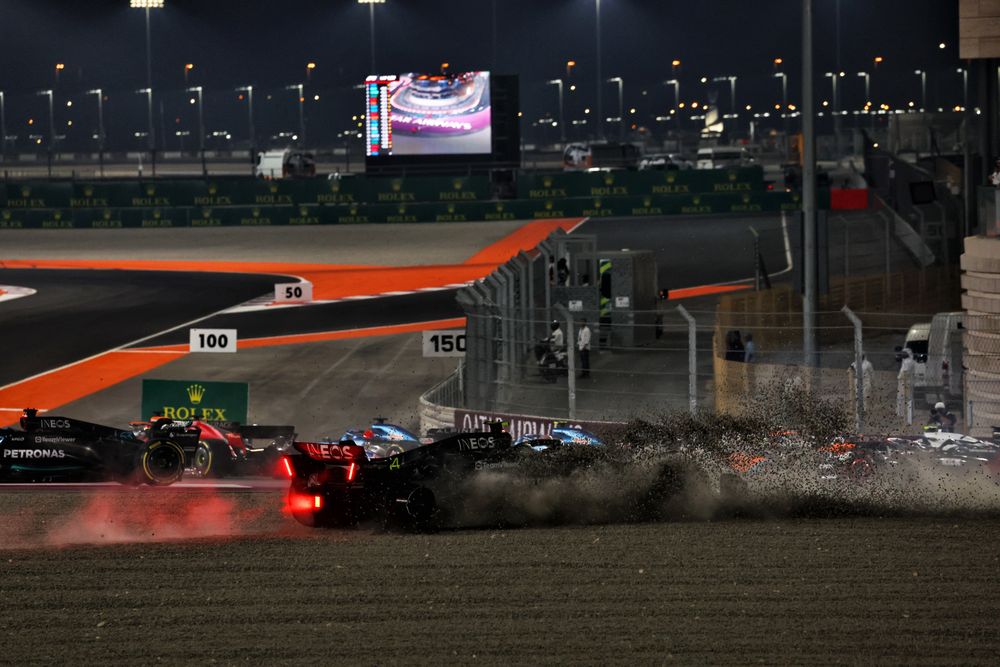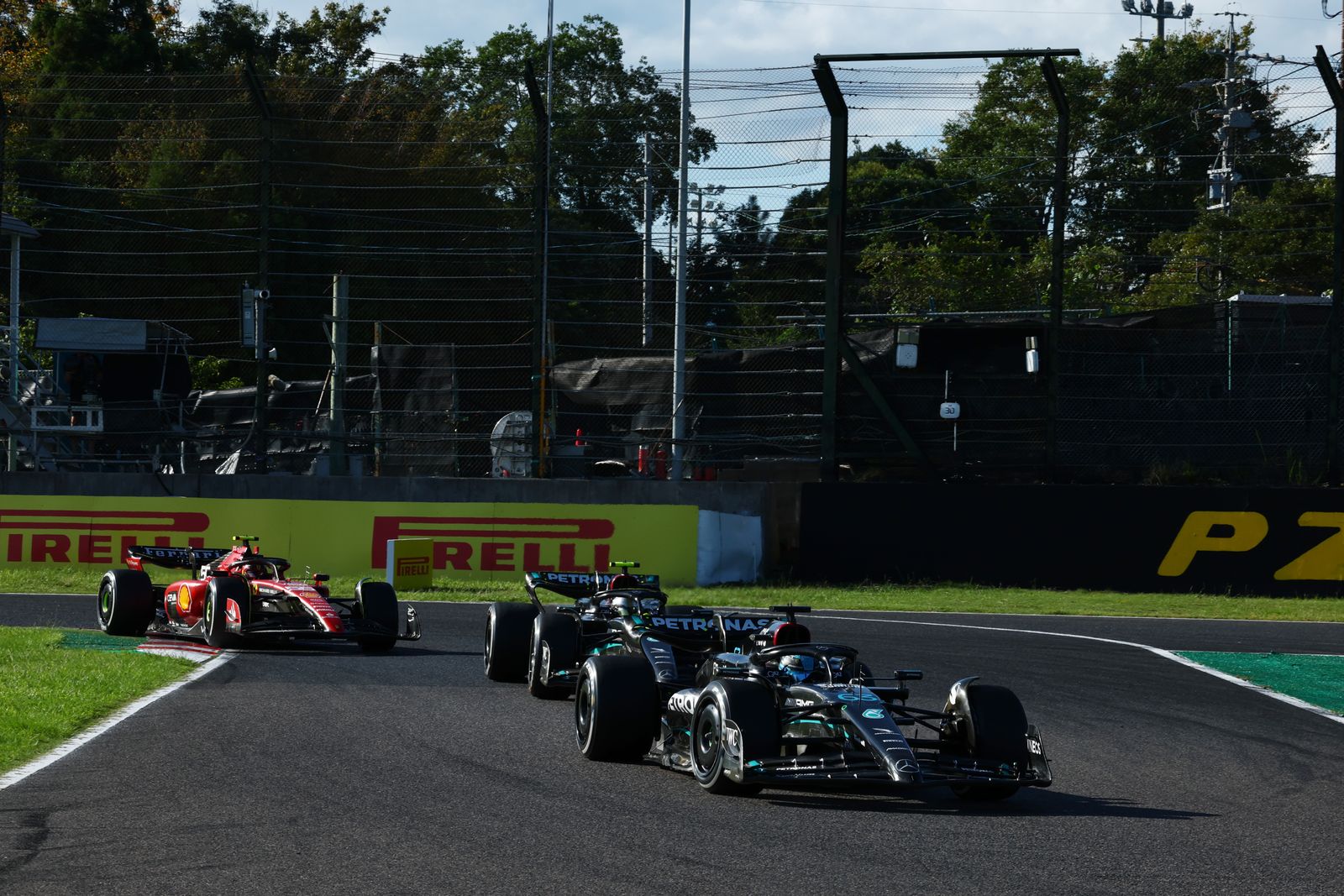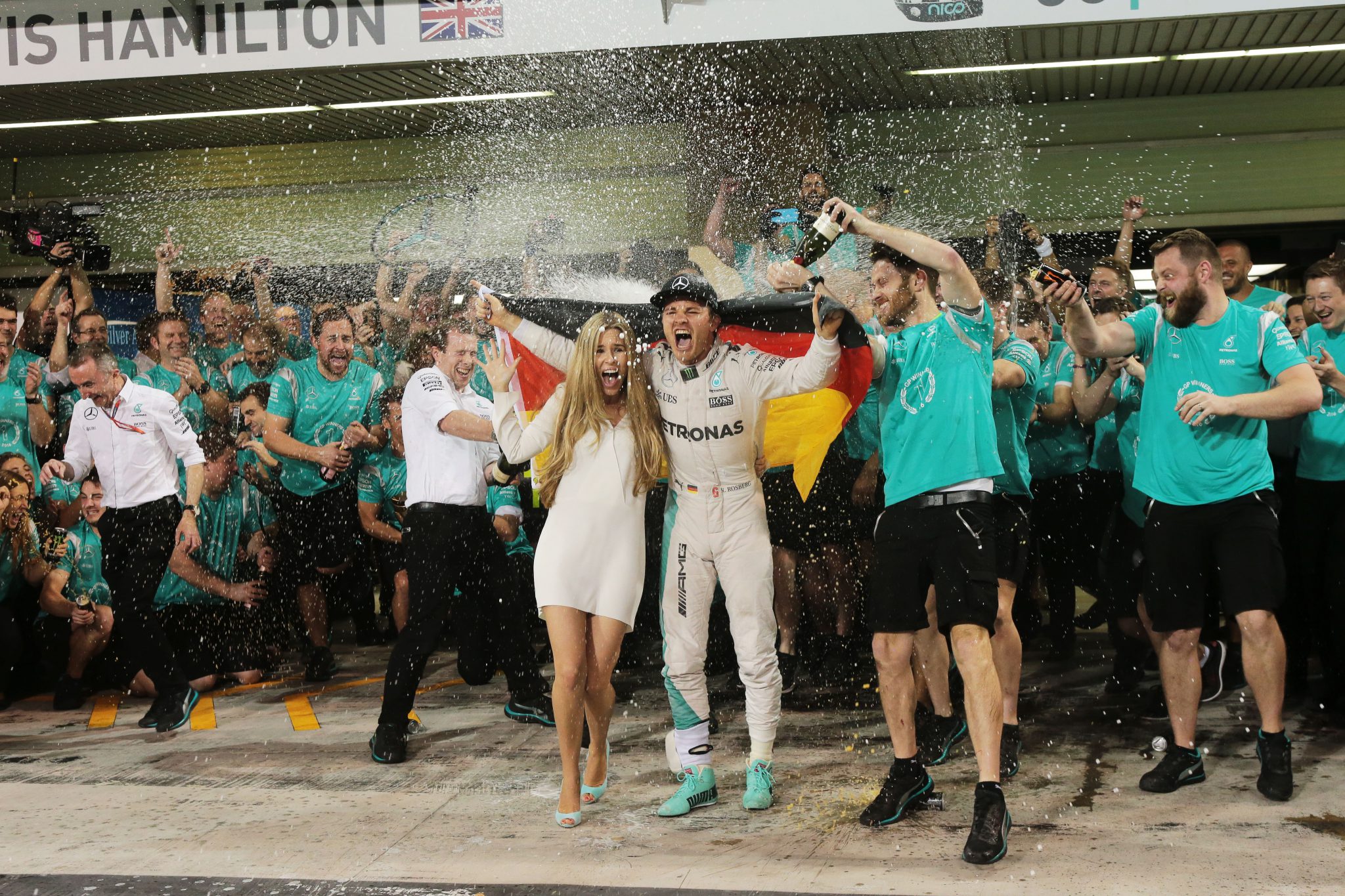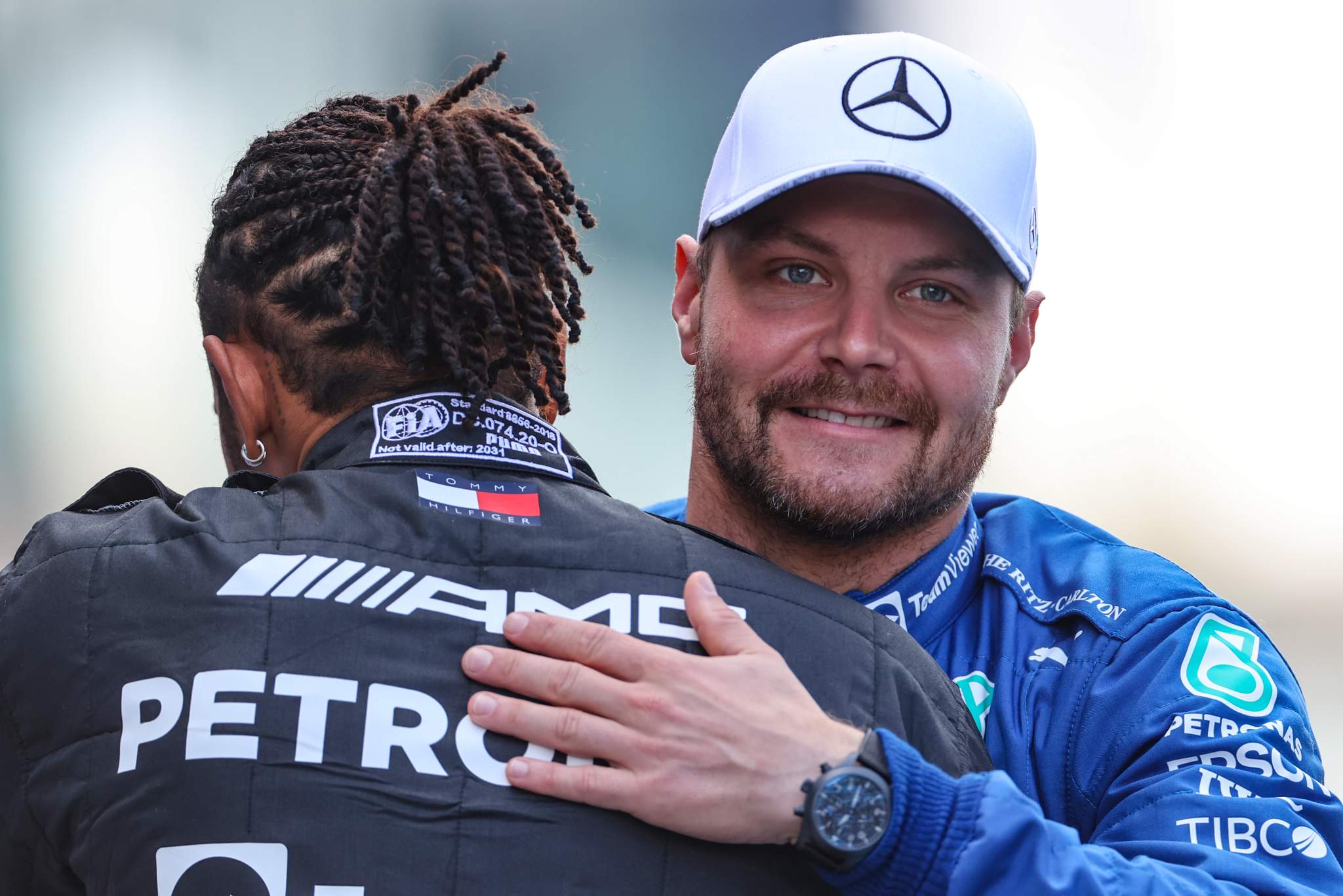Up Next

Mercedes hasn’t experienced a Formula 1 team’s worst-case scenario – your two drivers colliding – for quite some time until Lewis Hamilton and George Russell came to blows on the opening lap of the Qatar Grand Prix.
Who was at fault was soon sorted out once Hamilton saw a replay of the accident - he held his hand up and admitted “100% fault” for causing the collision and costing the team a potential double podium finish and the opportunity to inflict a lot of damage on Ferrari in their fight for second in the constructors’ championship.
What matters now is how does Mercedes avoid a repeat and is there any hint that Hamilton-Russell could end up like the Hamilton-Rosberg friction that still scars Mercedes to this day?
WHAT MADE A HAMILTON-RUSSELL CLASH INEVITABLE
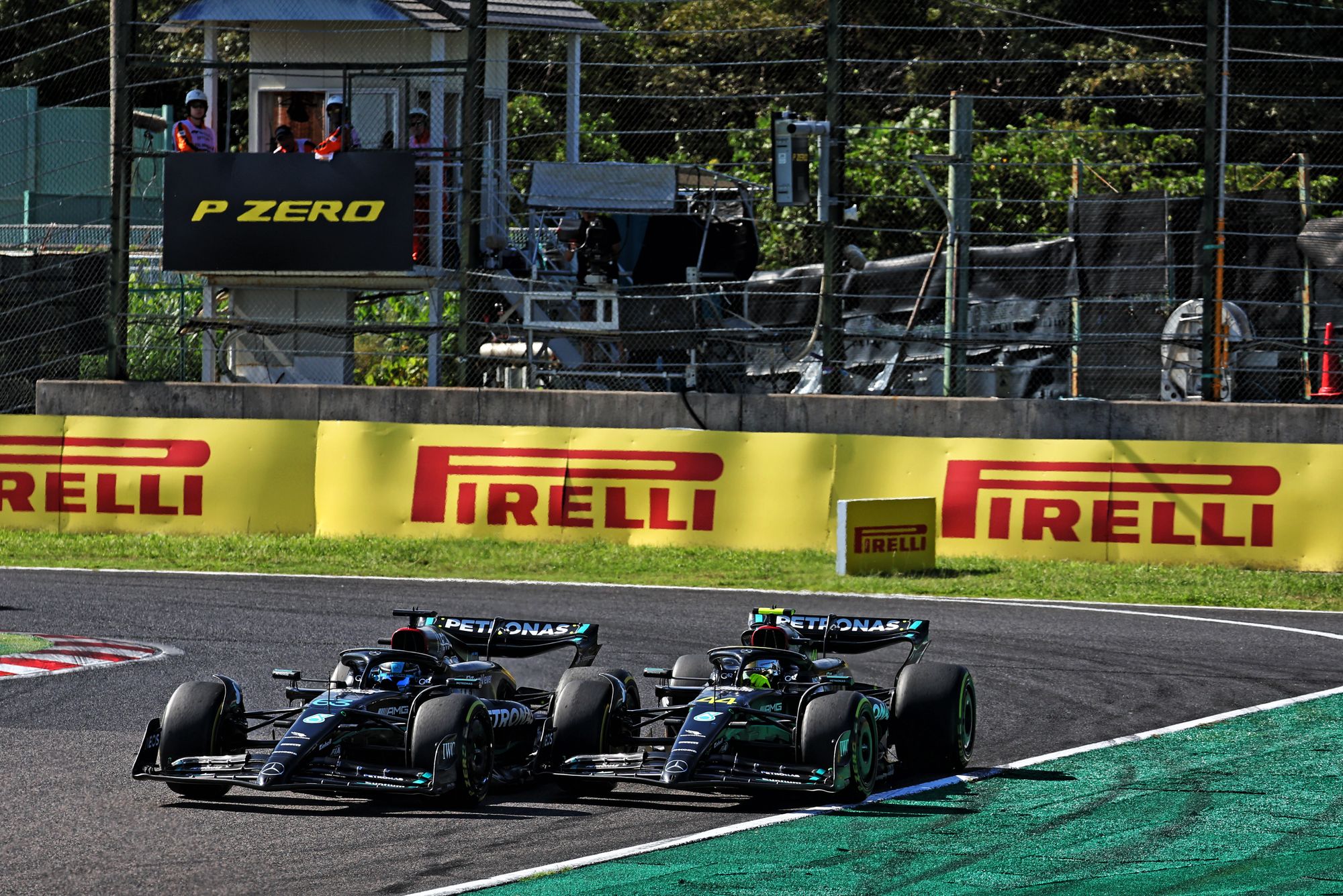
There was a feeling that inevitably this would come to pass at some point, given how incredibly competitive both Russell and Hamilton are and the fact Mercedes chose to pair them together after losing faith in Valtteri Bottas’ ability to be an effective wingman for Hamilton.
There have been tensions building for some time with Russell even shouting “second race in a row!” over team radio in the aftermath of the Lusail clash with Hamilton, referencing their very hard wheel-to-wheel fight at Suzuka.
Ultimately, Russell’s performances since he joined Mercedes have been at a very high level, and that means there is a much higher likelihood that the team’s two drivers will end up fighting over the same piece of asphalt in any given race.
There’s also perhaps a mindset shift at play this season too. Both of them know how to win championships - Hamilton so many times in F1 and Russell on his way up through the junior categories. They know how to play the percentages, take calculated risks when necessary and just keep the scoreboard ticking over on bad days.
But Mercedes isn’t properly competitive at the moment, which perhaps is encouraging both of them to take a few more risks than they otherwise might.
When your car isn’t capable, it’s very easy to overreach a bit. We saw this frequently in the years when Max Verstappen was trying to carry the fight to Mercedes and Ferrari in Red Bull-Renaults that weren’t often up to that task.
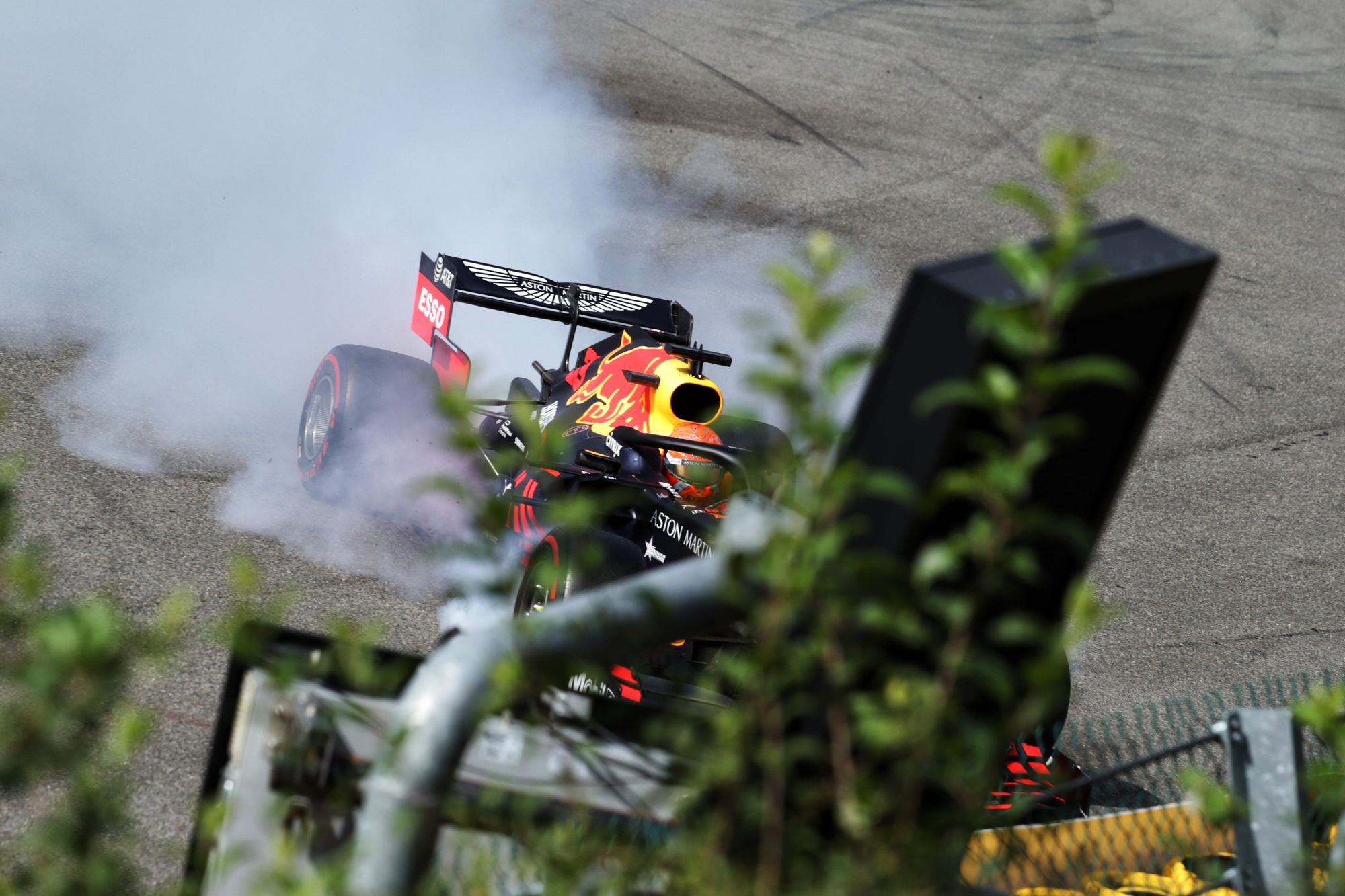
Hamilton mentioned over team radio before the start in Qatar that he wasn’t delighted to be starting the race on the soft tyre, so presumably, Hamilton decided the only way he could possibly convert what in his eyes was a strategic disadvantage was to absolutely go for it on lap one and try to lead the race.
For his part, Russell’s mindset was also to go for it and see if he could get ahead of Verstappen’s Red Bull. Russell admitted over team radio that he wasn’t even looking for Hamilton’s Mercedes coming past at Turn 1, as he was so focused on trying to race Verstappen.
Conversations over what Hamilton and Russell should do on lap one had taken place before the race but as communications director Bradley Lord, standing in for a (physically) absent Toto Wolff as Mercedes’s spokesperson in Qatar, said “what happened was obviously not part of the plan”.
So, you have two ultra-competitive drivers, of similar levels of ability, both with the same goal in mind, starting the race from similar positions, in the same equipment, both absolutely determined to try to achieve the best result they can.
Russell also said he could see “no reason” why Mercedes couldn’t have challenged Verstappen, believing the team’s race pace was better than McLaren’s, and no doubt that sniff of victory played a role in how both Mercedes drivers approached this race.
When that individual ambition collided with reality, so did their cars.
HOW TO AVOID A HAMILTON-ROSBERG REPEAT
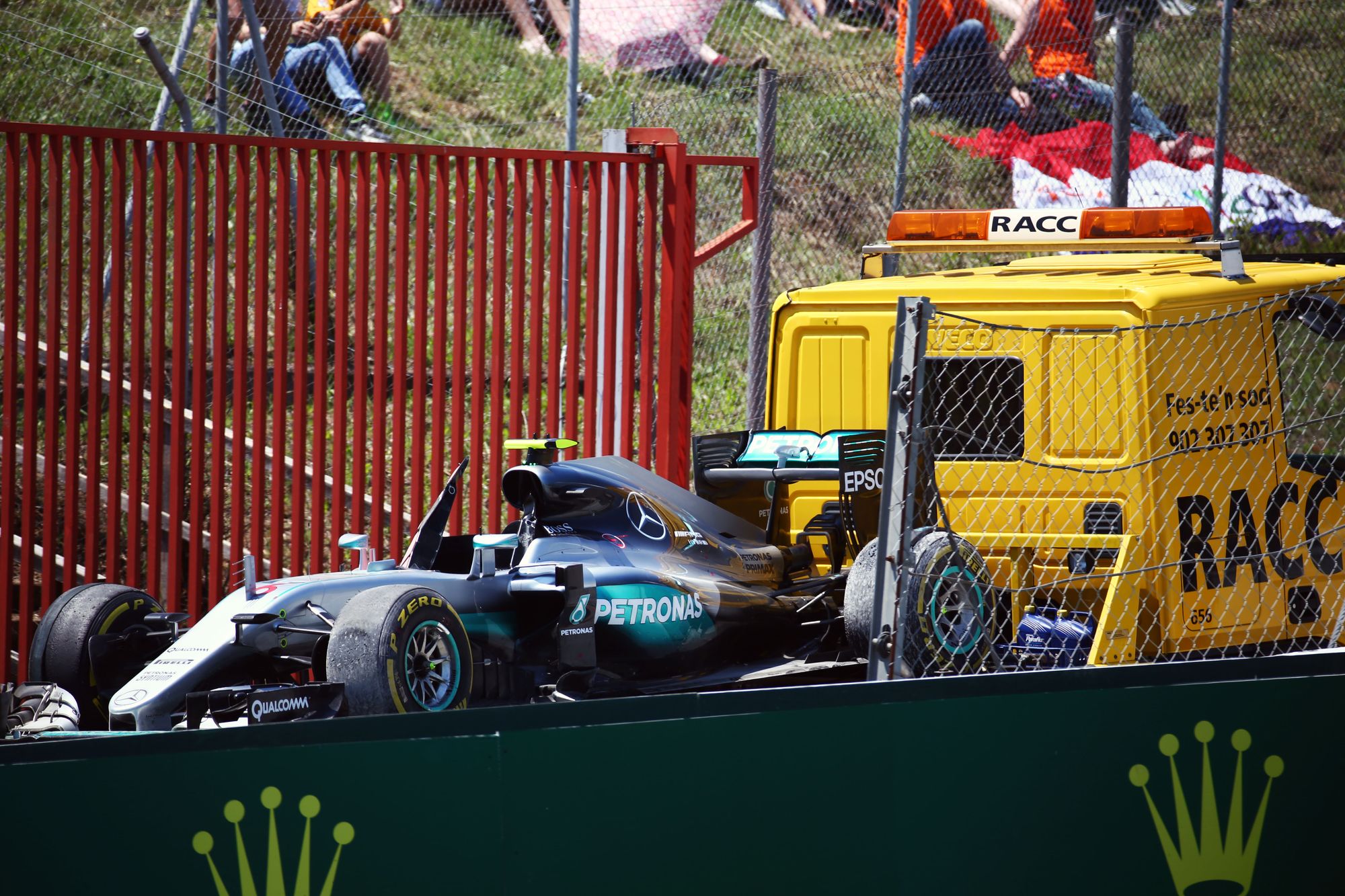
It’s been a long time since Mercedes had to endure the sort of toxic animosity between its drivers that characterised the Hamilton and Nico Rosberg years - even if it's still fresh in the minds of many in the team.
"I remember that one," Lord quickly said when The Race brought the topic of Mercedes' post-race media session onto the Hamilton-Rosberg years and the last major intra-Merc clash at the 2016 Spanish GP.
By that 2016 season you could visibly see the distrust Hamilton felt in the environment around him. Three consecutive seasons battling each other exclusively for the world championship exacted a heavy toll on Hamilton, Rosberg and the entire team.
Mercedes is a much different place now, of course - much calmer and more collaborative in the wake of Rosberg’s sudden retirement, Wolff’s decision to give Hamilton free rein and the calming effect of Hamilton having spent four seasons paired alongside a driver in Bottas who simply doesn’t play games.
Russell served his Mercedes apprenticeship ensconced within that environment, so will know better than anyone how Hamilton works, how that version of Mercedes worked, and how it wants to work now he’s replaced Bottas in the other car.
“The relationship isn’t broken. I don’t have any problems with George, we have a great relationship,” Hamilton insisted after the incident.
Russell said “Lewis and I, we'll be fine, we've got a huge amount of respect for each other, nothing was intentional from either side.”
Mercedes posted footage of Hamilton and Russell hugging it out in the aftermath of Qatar, with the caption “actions speak louder than words”.
Actions speak louder than words. pic.twitter.com/aN33QJLvtD
— Mercedes-AMG PETRONAS F1 Team (@MercedesAMGF1) October 8, 2023
But what action Mercedes takes in the interest of preventing a repeat incident will be equally important.
Mercedes says it plans to “talk about it behind closed doors”, insisting both drivers were “magnanimous” in dealing with the situation immediately after the race.
That basically means the plan is to discuss what happened privately and move on quickly.
THE KEY DOCUMENT
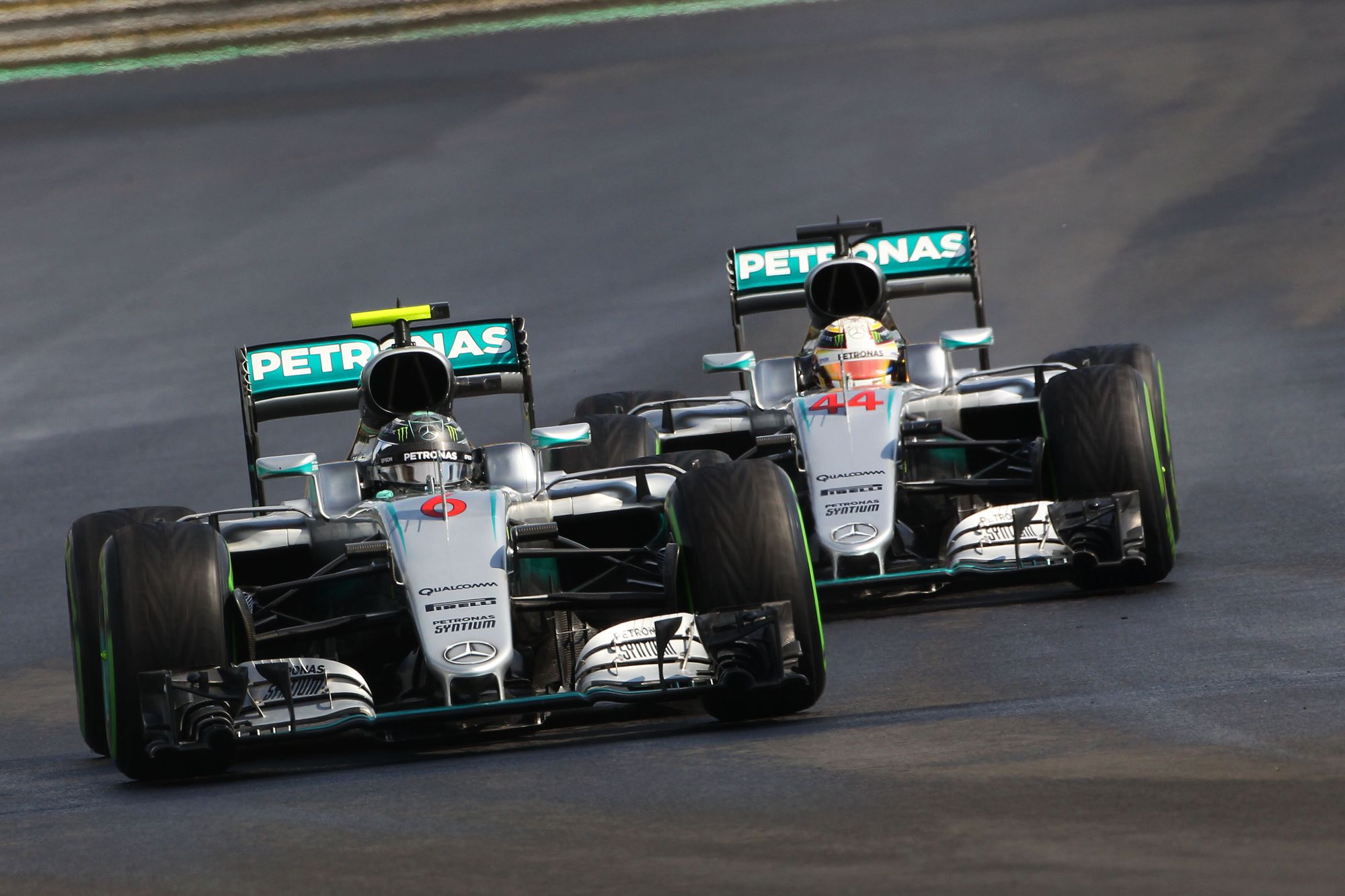
Mercedes developed a document during the Hamilton/Rosberg years known as its “racing intent” - which was designed to establish exactly how the team should approach races and ensure the team’s goals are not jeopardised by the drivers’ actions.
“We have our racing intent, our shared document that we all buy into as to how we approach races as a team,” Lord explained.
“The drivers have bought into that along with everybody else.”
Mercedes calls 2016 a “great shared experience” of how to approach and learn from moments such as the collision in Qatar.
The team says that will be “the basis for how we talk about things and move forward”.
But at the same time, Mercedes is also well aware of what it calls “the competitive tension between the two drivers” - which is something that will only become more difficult to manage should Mercedes build a car capable of once again fighting for race victories and world championships.
This tension is always a double-edged sword - capable of driving a team to new heights competitively but just as capable of blowing up in everyone’s face when the stakes are at their highest.
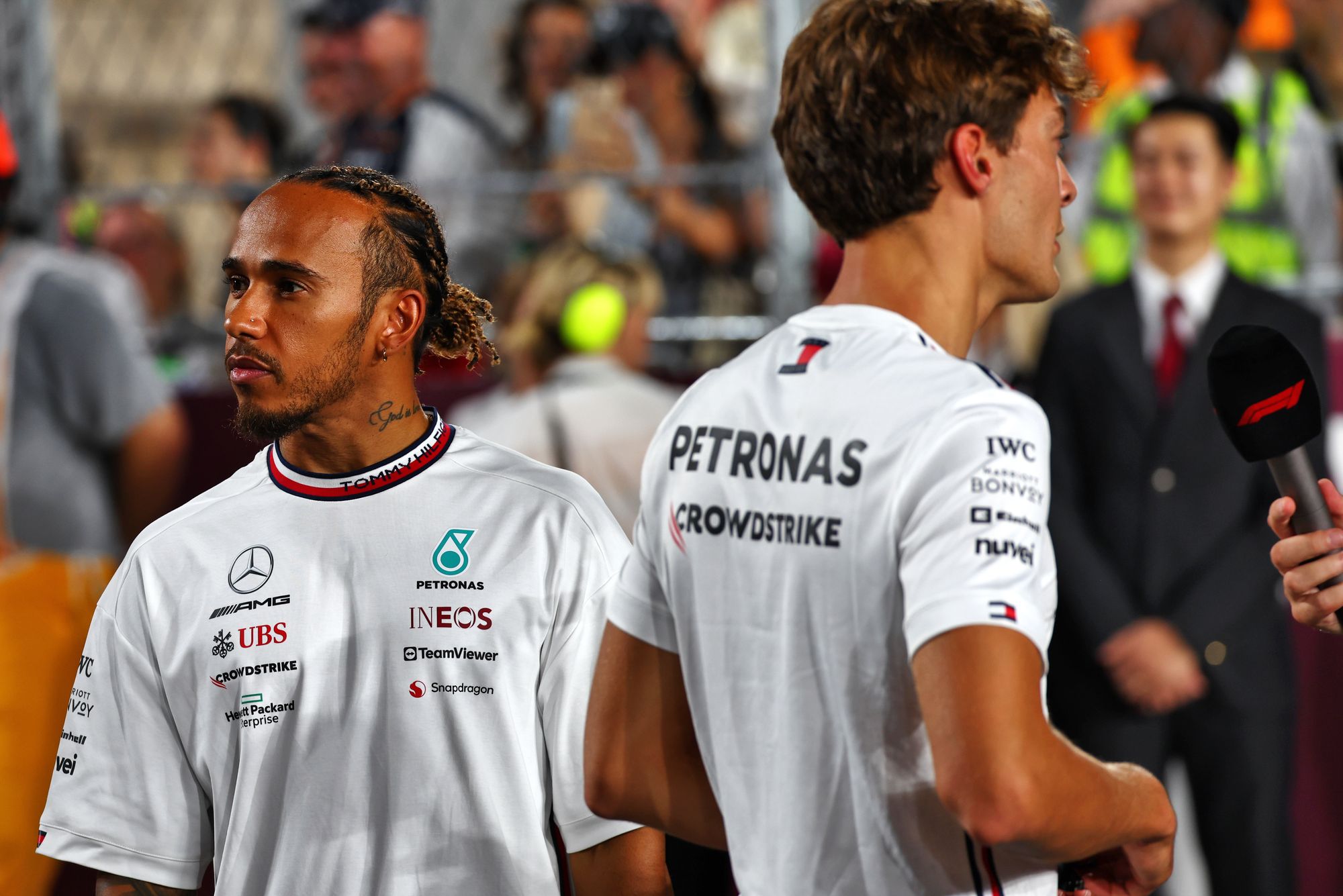
Mercedes describes the prospect of managing such a situation as a “privilege” and says it actively wishes to “be in that situation again and have those challenges in front of us” because of what that will ultimately say about the team’s restored competitiveness should it come to pass.
Maybe so, but that also means that life will become one hell of a lot harder - for everyone inside that team.
When two top drivers have the ultimate prize in their sights, and a car capable of giving it to them, there’s almost nothing anyone can do to keep a lid on the inevitable fireworks that result.

